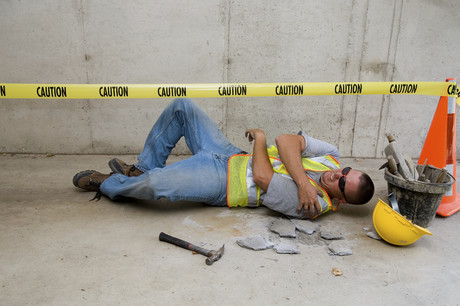Calls for a better rehabilitation framework for injured workers

Without a consistent framework to operate within, many rehabilitation providers have been left confused about what is expected of them in supporting the injured worker, according to icare.
Workplace rehabilitation represents the single largest expense category across all medical and non-medical third-party services engaged to support injured employees.
icare’s goal is to support injured workers to recover more quickly so that they can return to work, and icare Group Executive Workers Insurance John Nagle said the transformation within the industry aligns closely with icare’s values.
“A successful return to work, after an injury, requires a cohesive system in which all parties understand their part in the engagement process and work together to ensure the best result for the injured worker,” said Nagle.
“At the same time, improving safety in the workplace so that injuries are prevented means that premiums can be reduced — a significant benefit for employers, their employees and the economy.”
icare research indicates that the implementation of a best practice model will provide significantly improved return-to-work outcomes for its customers and better value to the NSW Workers Compensation Scheme.
Currently, 77% of workers return to work within three months and the number of active claims has remained broadly consistent between 2015 and 2016. However, the annual spend on workplace rehabilitation has grown by 35% and continues to climb.
“And, despite the tens of millions of extra dollars paid out for rehabilitation services, our data analysis confirms the extra expenditure has not led to better return-to-work rates or outcomes. In fact, the success rate of injured workers who received rehabilitation services, and have actually returned to work, is on a downward trend from 71.8% in January 2015 to 67.5% in December 2016; and the successful return-to-work rate continues to fall,” said Nagle.
“This is not acceptable and it clearly expresses that the current models are not delivering the right customer outcomes or value. We have found that a core weakness of the current service model is its disconnectedness. Until recently, rehabilitation providers had up to five different contracts with any of the five scheme agents managing claims and service providers on behalf of icare. This led to inconsistencies in monitoring rehabilitation service performance, differences in the quality of customer service, differences in the definition of services to be provided. Consequently, there is considerable variation in the prices charged by different rehabilitation providers for the same services.”
Based on data analysis, 20 rehabilitation providers account for more than 80% of scheme’s annual rehabilitation services spend of more than $140 million.
“It is obvious that we need a better way of working together,” Nagle said.
In order to improve how the industry works together, icare has launched a series of improvement initiatives, including:
- cutting out a stage to improve the speed, understand the issues and provide a better service for injured workers;
- applying data analytics and using a Net Promoter Score (NPS) index to gain insights into the performance of rehab providers;
- conducting independent audits of scheme agent referrals to rehabilitation providers to improve referral practices;
- engaging workers, employers and providers in face-to-face interviews and workshops, and online surveys, and involving peak industry bodies like the Australian Rehabilitation Providers Association (ARPA).
Do a young worker safety check-up this NSW Youth Week
With more than 15,000 of the state's 25-and-unders injured each year, SafeWork NSW is urging...
2025 Champions of Safety Awards nominations close 4 April
Nominations for the 2025 Champions of Safety Awards — an initiative by the Workplace Health...
Move to make SafeWork NSW "a regulator with teeth"
NSW has passed legislation to officially establish SafeWork NSW as a standalone regulator —...










